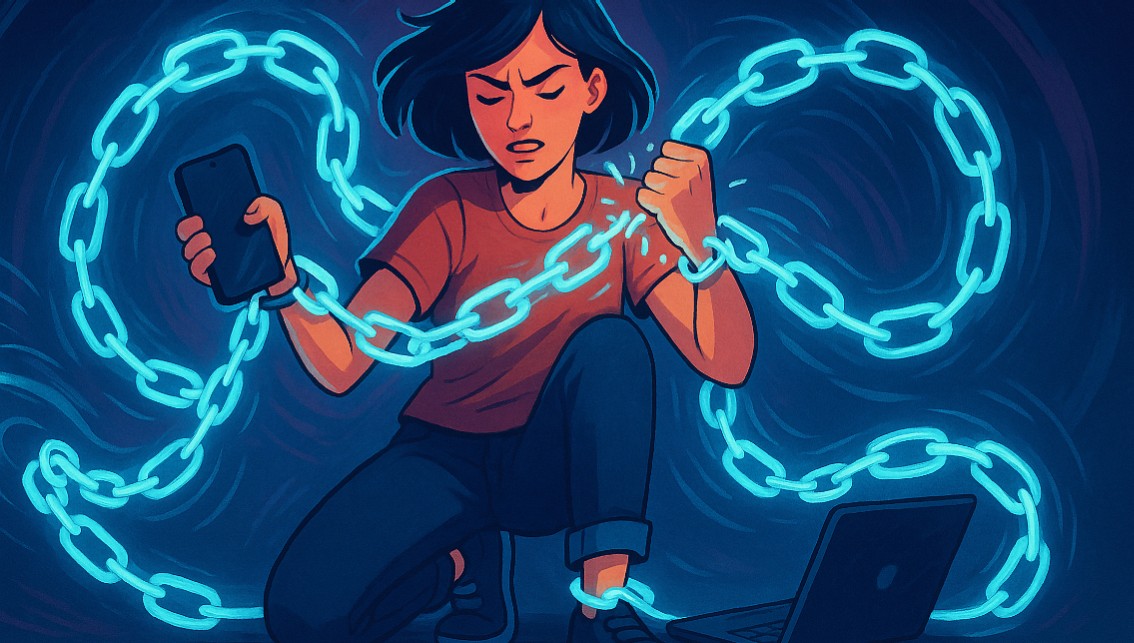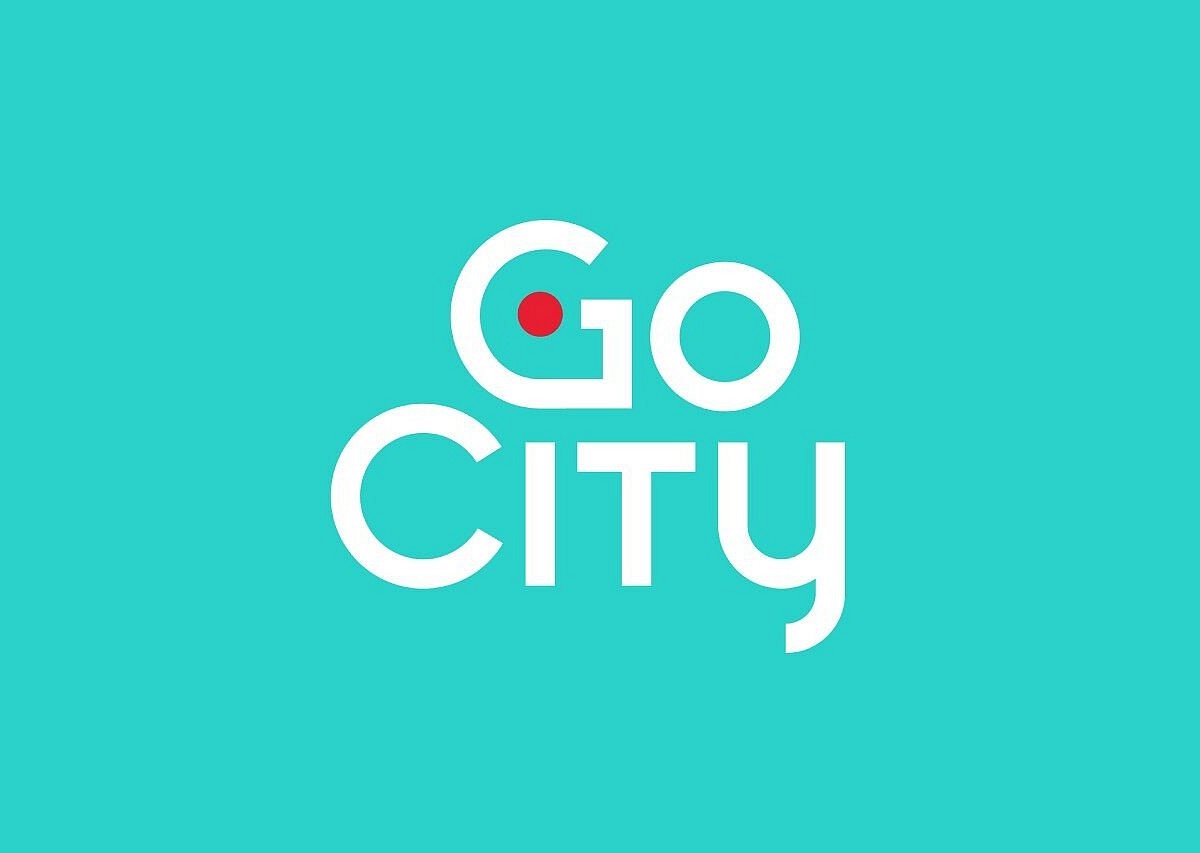🎯 Too Long; Didn’t Read
Digital detox vacations are a hard reset for your brain.
The benefits kick in fast:
-
Without the constant ping of notifications, your body’s stress response dials down.
-
Sleep quality often improves because screen light isn’t messing with your melatonin.
-
Your attention span, usually shredded by multitasking, gets a chance to stitch itself back together.
These breaks aren't one-size-fits-all. You can go full hermit in a remote nature retreat or an off-grid cabin. If structure helps, organized programs at wellness spas handle the details for you. The common thread? Forcing a pause on the digital chatter.
Pulling this off requires a plan:
-
Go in with clear rules—maybe your phone stays in the hotel safe.
-
Warn people you’ll be offline so you’re not tempted to check in.
In the US, true seclusion is the main draw:
-
National parks like the backcountry of Yellowstone offer it.
-
So do remote beaches where the signal is basically nonexistent.
-
For a more guided experience, wellness retreats in spots like Sedona or the Berkshires are built around the idea of a clean break from tech.
Benefits of Digital Detox Vacations

Going off-grid rewires your brain and body.
The benefits are immediate and tangible:
-
Stress Plummets. The constant ping of notifications creates a low-grade alarm state. When you disconnect, that background hum vanishes. The nervous system, no longer on high alert, can finally power down. The result is a genuine sense of calm.
-
Mental Reboot. Digital distractions fracture our attention. Without them, your brain isn't juggling ten tasks at once. It gets a chance to defragment, like a computer hard drive. This downtime is crucial. You'll find your concentration sharpens, and creative solutions to old problems can suddenly appear.
-
Actual Sleep. This isn't just about less blue light before bed (though that helps). It's about breaking the cycle of late-night scrolling that keeps your mind racing. On a digital detox, you fall asleep because you're tired, not because you’ve exhausted your feed. The sleep you get is deeper, more restorative.
-
Real Conversations. With phones out of sight, interactions change. There's no glancing down mid-sentence. You make eye contact. You listen. Conversations with your partner or kids go deeper. You might actually talk to a local instead of just following a GPS.
-
You Notice Things. Unplugging forces you into your immediate surroundings. You taste the food. You feel the sun or the breeze. You're not framing a perfect shot for Instagram; you're just seeing the view.
-
The Body Moves. Screen time is sedentary time. A digital detox almost inevitably means more physical activity—even if it's just walking, swimming, or exploring. Your posture improves away from hunched screens. You simply use your body more.
-
Habits Reset. Perhaps the most lasting benefit is the perspective. After a week of living without reflexive phone-checking, your old habits seem bizarre. You're likely to return home and consciously leave your phone in another room, or not take it to bed.
Types of Digital Detox Vacations
Remote nature retreats
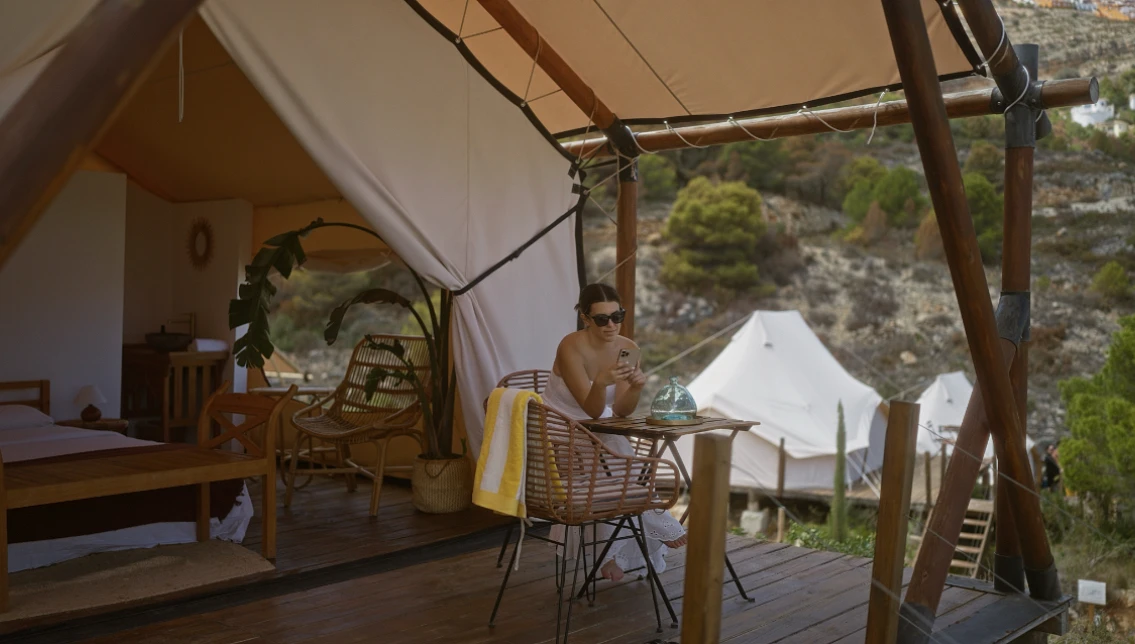
Remote nature retreats force a genuine digital detox. They’re located in true Wi-Fi dead zones—deep in national parks, on isolated stretches of coastline, or high in mountain ranges where a signal bar is a forgotten concept.
This isn't just a weak connection; it's a full stop. The default state of being connected is replaced by physical activity. Think hiking trails that demand your attention, the patient focus of identifying bird calls, or the sheer physicality of paddling a kayak.
At night, the only screen is the cosmos. The effect is neurological. Crisp air, uninterrupted silence, and the slow, predictable patterns of nature lower cortisol levels. The mental static of notifications fades, allowing for deeper, more consecutive thought.
Beyond simple isolation, these retreats are structured to fill the void left by technology. Daily schedules might include mandatory silent mornings, Vinyasa flow yoga on a wooden deck, or guided meditation sessions.
The philosophy is minimalist. Participants are nudged to engage directly with their environment—to notice the texture of bark, the shift in weather, the routines of local wildlife. This deliberate pace, free from the compulsion to check a phone, creates room for introspection. It’s a recalibration.
People often report a shift in perspective, a decreased urgency to be online. This trend is a direct pushback against hyper-connectivity, prioritizing mental resets over Instagrammable moments.
Wellness and spa destinations focused on mindfulness and relaxation

The goal of a mindfulness-based wellness retreat is a full system reboot. It’s about teaching your brain to unplug.
The process starts with the body. Skilled therapists work out deep-seated tension through targeted massage or the buoyant pressure of hydrotherapy.
The air might carry the subtle scent of eucalyptus from an aromatherapy session. This physical release is the first, crucial step to calming a buzzing mind.
Then comes the mental work. Without the constant ping of notifications, the retreat introduces structured silence. Guided meditation sessions train focus. Breathwork classes are less about exercise and more about relearning your body’s most fundamental rhythm. The emphasis is on presence. You’re practicing what to do with your attention.
The environment is a silent partner in this. These places are almost always off the beaten path—tucked away in a redwood forest or perched on a windswept coastline.
The setting is a tool. A challenging hike leaves you too physically spent to scroll mindlessly. A healthy, flavorful meal proves nourishment doesn’t have to come from a screen.
The real value isn’t the week of peace. It’s the muscle memory it builds. You leave having practiced a slower pace. The hope is that this new default for handling stress—a few deep breaths instead of reaching for your phone—sticks with you long after you’ve reconnected to the grid.
Off-the-grid cabins, eco-lodges, and campsites
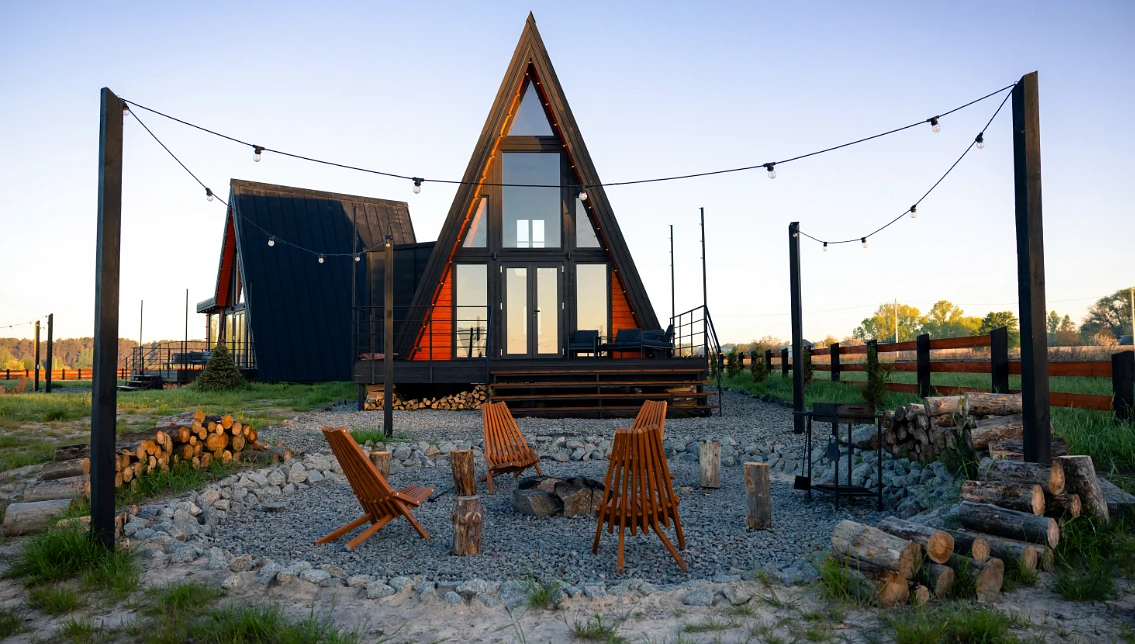
Want a real digital detox? Off-grid cabins, eco-lodges, and bare-bones campsites are built for it. They’re deliberately situated beyond reliable Wi-Fi and cell service.
You’re living with fewer modern crutches. This forces a slower pace. The day revolves around campfires, spotting wildlife, and stargazing without a single screen-glow. The constant mental static fades, replaced by the actual sounds of nature. It’s a hard reset for your brain.
The eco-angle is crucial. These spots often operate on solar power, collect rainwater, and prioritize minimal impact on the land. This pairs directly with the digital disconnection. For the eco-conscious traveler, it’s a unified experience: reducing your tech footprint and your environmental one simultaneously. It’s a proof-of-concept for a more intentional life. You practice living with less clutter, both digital and physical.
The goal is for that mindset to stick after you leave, fostering a lasting shift toward balance.
Tech-free resorts and organized digital detox programs

Tech-free resorts force a clean break from screens. The goal is simple: no email, no scrolling, no notifications. Phones are often collected or locked away upon arrival. This immediate cutoff, going cold turkey, eliminates the temptation to "just check once."
Without a device in hand, attention shifts. You notice the environment—the sound of birds, the shape of a leaf. Conversations with other guests become deeper, less interrupted. The resorts fill this newfound space with optional, low-tech activities. Think guided hikes, pottery classes, or group meals. The structure isn't rigid; it's a scaffold for genuine downtime, preventing boredom from driving you back to a screen.
The more involved detox programs go further. They address the why behind our digital itch. Through brief workshops or discussions, they teach practical hacks for managing a digital life back home. This might involve setting hard boundaries for work email or learning to spot anxiety-driven scrolling. The focus is on building real-world muscle memory for disconnecting.
The outcome is a reset. You return not only rested but with a tangible sense of how quiet feels, making it easier to replicate moments of disconnection in daily life.
How to Plan a Successful Digital Detox Vacation
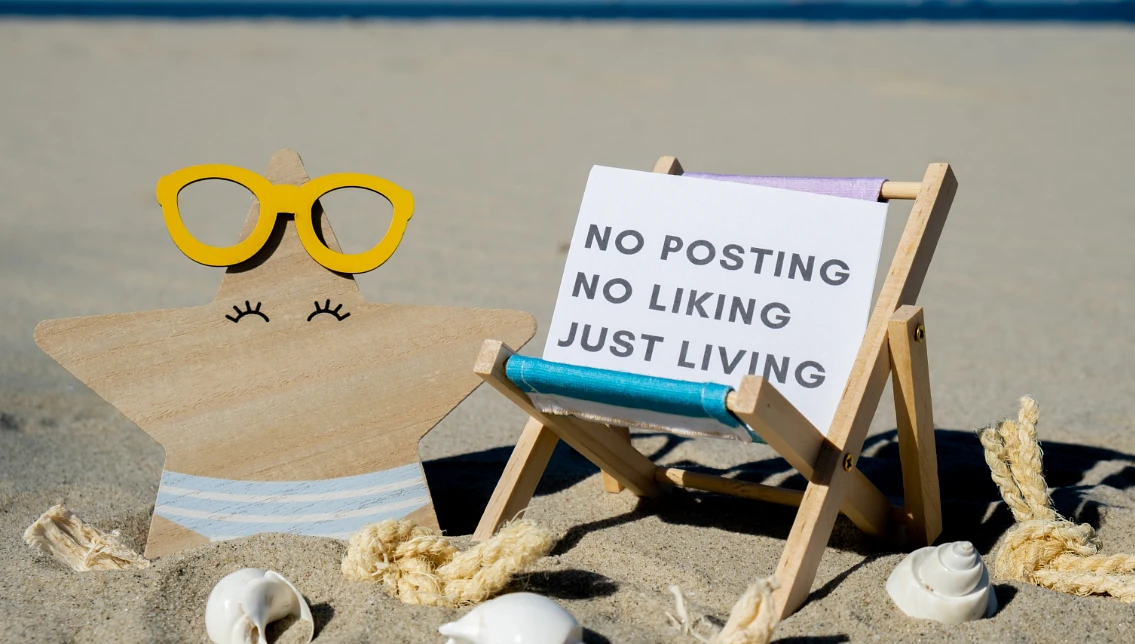
Pulling off a true digital detox vacation takes more than just good intentions; it needs a bit of strategy. The goal is to make disconnecting feel effortless, not like a punishment.
First, your location is everything. Skip places with spotty Wi-Fi that will just tempt you to hunt for a signal. Go somewhere that makes being offline the entire point. Think remote cabins, proper eco-lodges, or resorts that are proudly tech-free. The environment itself should discourage screen use.
Before you leave, do the admin. Give your key people—family, close friends, work—a heads-up. Tell them you'll be off-grid and set a hard boundary on your availability. This pre-work stops the guilt and the "I'll just check once" spiral from ever starting. It’s like a psychological airlock.
To make the unplugged time actually work:
-
Ditch digital dependencies. Get physical maps and print out key contacts and reservations. Relying on paper forces you to engage with your surroundings, not a screen.
-
Be blunt about your availability. A clear "I am unreachable until X date" auto-reply is kinder than a slow, frustrating trickle of replies.
-
Wean yourself off beforehand. Going cold turkey on vacation is rough. Scale back your daily screen time in the week leading up to the trip to avoid that jittery feeling.
-
Pack for analog engagement. Fill your bag with books, a journal for sketching or writing, a deck of cards. These are your tools for the newfound free time.
-
Lean into screen-free activities. Let the day be structured by a hike, some time stretching, or just sitting and observing. The point is to be present.
-
Focus on your companions. Real conversation, a shared meal without phones on the table, a game—these are the connections you’re making space for.
-
Use the distance to audit your habits. The detox isn't really about the week away; it’s about what you bring back. Notice how you feel without the constant ping. Which digital habits serve you, and which ones just create noise?
Popular US Destinations for Digital Detox Vacations
National Parks known for seclusion and natural beauty
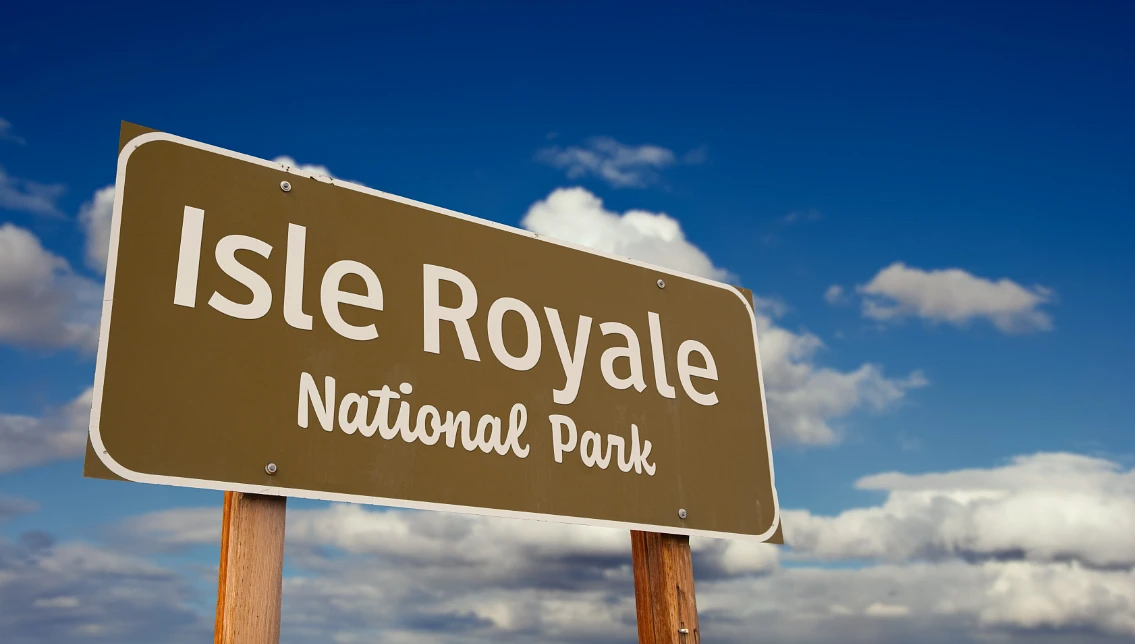
For a real digital detox, you need more than just a spot with no bars—you need places that demand effort to reach. These parks deliver serious seclusion.
-
Gates of the Arctic National Park & Preserve, Alaska: The isolation on a different scale. There are no roads. Not even trails to follow. Your arrival hinges on a bush plane or a trek measured in weeks, not days. The landscape is gnarled, ancient rock. Rivers run clear and cold, completely free of any human imprint. And the wildlife? This is their domain. We're talking massive migratory caribou herds that darken the tundra, and grizzlies that command a wide berth.
-
Isle Royale National Park, Michigan: Isolation defines this park. It's an island cluster in Lake Superior, reached only by a multi-hour ferry ride, private boat, or seaplane. Cars are banned. The payoff is pristine trails, quiet canoe routes, and a chance to see moose and wolves with very few people around. Its inaccessibility keeps visitor numbers low.
-
North Cascades National Park, Washington: This place is almost entirely official wilderness. Getting there requires a hike or a boat ride. The payoff? Thickly forested mountains that climb sharply, valleys that feel deep enough to get lost in, and trails where your only company might be the scuttle of a lizard. You won't find picnic tables or fire rings. The silence is the real amenity.
-
Theodore Roosevelt National Park, North Dakota: The prairies stretch out, massive. Badlands break the horizon in jagged lines. Solitude is baked into the geography itself. A solid third of the park holds official wilderness status. That means true backcountry.
-
Kings Canyon National Park, California: While part of it is easily visited, the vast majority of Kings Canyon is raw backcountry. The road access is limited, which naturally filters the crowd. It’s a prime destination for backpackers who want deep, quiet and massive, scenic landscapes without the Sierra Nevada crowds.
-
Dry Tortugas National Park, Florida: Seclusion here is next-level. You're 70 miles into the Gulf of Mexico. No bridges, no last-minute supply runs. Your only options are a boat ride or a bumpy seaplane flight. Then it's just you, the endless water, a hulking 19th-century fort, and reefs teeming with life.
Remote beach areas with minimal connectivity
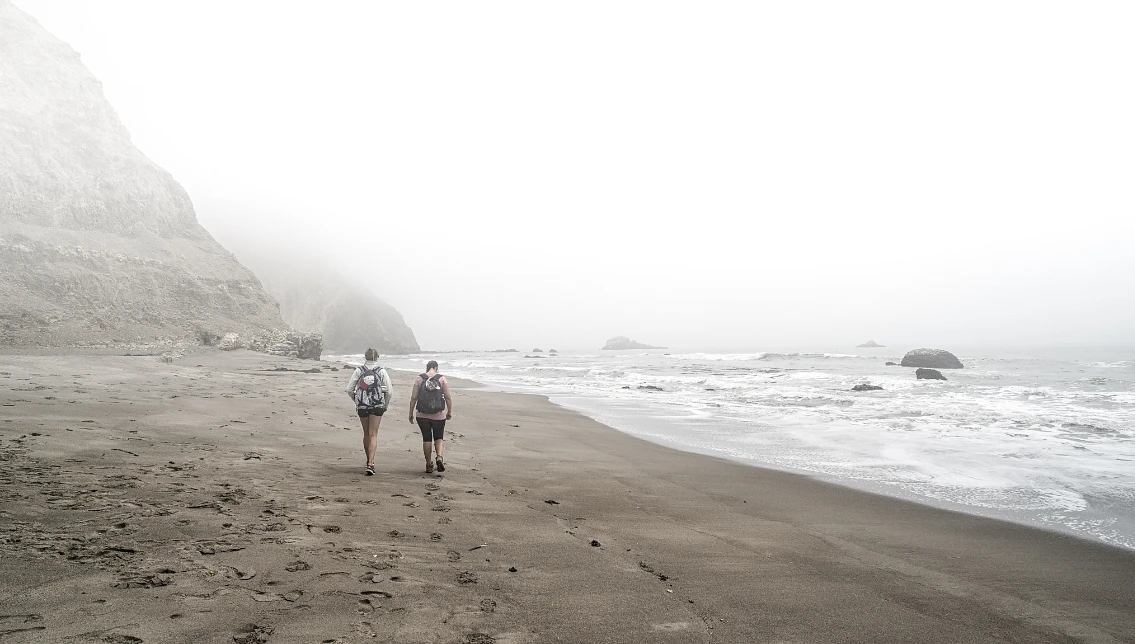
Target beaches where the cell signal is gloriously patchy. These places force you to engage with your surroundings, not your screen.
Here are a few spots where disconnecting is the main attraction:
-
Outer Banks, North Carolina: This is a string of narrow barrier islands where the Atlantic does the talking. Cell service drops out for miles at a stretch. The vibe is weathered and real. You walk for hours on vast, empty beaches. The wind shapes the dunes into new sculptures daily. Explore forgotten lighthouse stations and wildlife refuges where your only notifications are bird calls.
-
Lower Keys, Florida: The connection out here is stubbornly unreliable. Life revolves around the water. You’re there to snorkel the shallow reefs, spot endangered Key deer, and simply exist. The culture is fiercely laid-back. It’s a proper beach detox.
-
San Juan Islands, Washington: The beaches here are rocky and rugged, framed by evergreens and cold, clear water. Your phone will desperately search for a signal. Let it. The real activity is here: scanning the horizon for a whale’s spout, kayaking through still channels, or combing the tide lines for agates.
-
Cumberland Island, Georgia: Access is by ferry only. That sets the tone. No signal? Good. The island is wild. Miles of beach are backed by dense maritime forest, all haunted by the ruins of old estates. You share the space with roaming horses and armadillos. It’s a palpable, immersive silence broken only by the ocean and the crunch of oyster shells underfoot.
-
Point Reyes National Seashore, California: A landscape in motion. The Pacific pounds the coastline, creating vast, often empty stretches of sand. The cell signal is a lost cause, which is the point. The focus shifts to the physical: the chill of the fog, the smell of salt and pine, the sight of elephant seals hauled out on the sand.
Wellness retreats
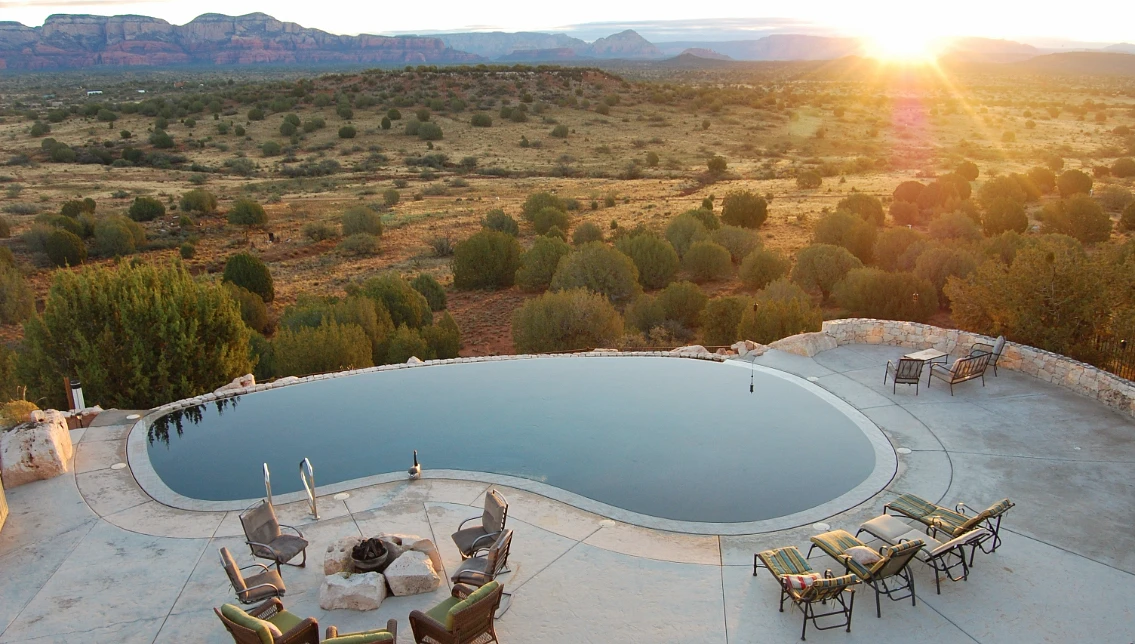
Wellness retreats provide a hard reset from our always-on digital lives. Places like Sedona, Arizona, and the Berkshires, Massachusetts, are specifically geared for this kind of deep, screen-free recharge.
Sedona’s landscape is instantly recognizable. Massive red rock formations jut up from the desert floor. The area has a reputation for palpable, spiritual energy. Centers like Sedona Soul Adventures build their programs around this environment. Days are a mix of holistic practices: yoga at sunrise, guided hikes into vortex sites, and energy work like Reiki. The goal is direct engagement.
The isolation of the desert naturally muffles digital noise. The focus shifts inward, forcing a confrontation with your own thoughts, away from notifications. It’s a demanding but clarifying experience.
The hush in the Berkshires feels distinct. It’s not an empty silence but a quiet that settles in the valleys between ancient hills. The atmosphere leans toward gentle replenishment rather than any overwhelming, spiritual charge.
Your day begins not with an alarm, but with forest bathing. That’s a deliberately slow walk beneath maples and oaks, a practice of tuning into specific sounds and smells. Later, restorative yoga sessions demand extended, quiet poses designed to unravel deep-seated tension. Meals are integral. The farm-to-table approach is literal: you’ll eat vegetables picked hours before, maybe even ones you pulled from the soil yourself.
Workshops cover practical skills, like crafting tinctures from lemon balm grown on-site. The schedule intentionally includes empty space. The goal is physiological—to dial down the nervous system. World-class concerts or museum visits are close by, providing cultural texture without hustle. This approach suits those seeking a genuine break from digital noise, swapping it for straightforward, deep-seated calm without sacrificing comfort.
❓FAQ❓
❶ Can a digital detox help improve physical health beyond stress relief?
Cutting screen time usually means your body gets to actually move. The direct payoff is a stronger heart and more defined muscles. Instead of your finger scrolling, your heart gets a workout. Instead of slouching, your muscles engage.
❷ How long should a digital detox vacation ideally last?
A short break, even just a long weekend, helps. You’ll feel a difference. However, for a deeper recharge, aim for a full week. It gives your nervous system enough time to actually dial down, moving past surface-level relaxation into a genuine, physiological recovery.
❸ Are digital detox vacations suitable for families with children?
Absolutely. Children learn through action and observation, not just instruction. A parent who is truly present shows them something vital. It demonstrates that focus is intentional. That a person right in front of them is more important than a notification. They internalize this. They start choosing genuine interaction over the constant pull of a screen.




